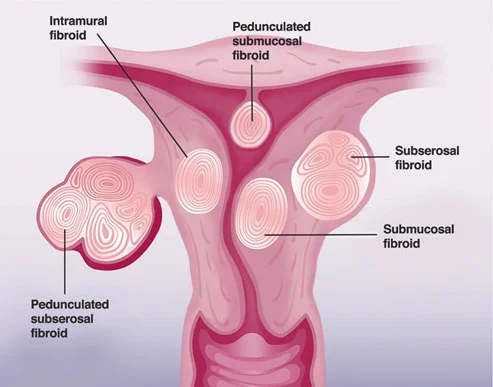Mobile
+91 8369559053
drsagputelimbandvesselcare@gmail.com
UTERINE FIBROID OR PROSTATE EMBOLIZATION
Uterine Fibroid Or Prostate Embolization
Uterine fibroids, also known as uterine leiomyomas or fibroids, are benign smooth muscle tumors of the uterus. Most women have no symptoms while others may have painful or heavy periods. If large enough, they may push on the bladder causing a frequent need to urinate. They may also cause pain during sex or lower back pain. A woman can have one uterine fibroid or many. Occasionally, fibroids may make it difficult to become pregnant, although this is uncommon.

While palpation used in a pelvic examination can typically identify the presence of larger fibroids, gynecologic ultrasonography (ultrasound) has evolved as the standard tool to evaluate the uterus for fibroids. Sonography will depict the fibroids as focal masses with a heterogeneous texture, which usually cause shadowing of the ultrasound beam. The location can be determined and dimensions of the lesion measured. Also, magnetic resonance imaging (MRI) can be used to define the depiction of the size and location of the fibroids within the uterus.
Uterine artery embolization is a procedure in which an interventional radiologist uses a catheter to deliver small particles that block the blood supply to the uterine body. The procedure is done for the treatment of uterine fibroids and adenomyosis. This minimally invasive procedure is commonly used in the treatment of uterine fibroids and is also called uterine fibroid embolization.

Prostatic artery embolization (PAE, or prostate artery embolisation)
It is a developing non-surgical technique for treatment of benign prostatic hypertrophy (BPH). The procedure involves blocking the blood flow of small branches of the prostatic arteries using micro-particles injected via a small catheter to decrease the size of the prostate gland. It is a minimally invasive therapy which can be performed with local anesthesia, as an outpatient procedure.
Men with an enlarged prostate may suffer from symptoms of lower urinary tract obstruction, such as sensation of incomplete urination, inability to urinate, weak urinary stream, or having to urinate frequently (often awakening from sleep). If the symptoms cause a significant disruption to quality of life, a man may undergo initial treatment by oral medication, such as alpha-1 receptor blockers, 5-alpha-reductase inhibitors, or phosphodiesterase-5 enzyme inhibitors. Those with severe/progressive symptoms or those who do not experience symptom relief from medication have traditionally been considered for surgical intervention, with transurethral resection of the prostate or TURP as the standard of care.
However, there are problems with both medical and surgical treatments, including undesired side effects and variable effectiveness. For example, sexual dysfunction and orthostatic hypotension are side effects of 5-alpha-reductase inhibitors.

Prostatic artery embolization is an emerging treatment alternative which avoids the risks of systemic medication and of surgery. The procedure involves blocking the blood flow of the prostate which results in decrease in the size of the prostate gland and resolution of symptoms.
Book Appointment
-
Varicose Veins & Varicose Ulcer Treatment
-
Non-Healing Wound Management
-
Vascular Malformations
-
Uterine Fibroid or Prostate Embolization
-
Cancer Treatments – TACE, RFA, Embolization
-
Dialysis Access Catherization
-
Diagnostic Procedures – FNAC, Biopsy, Diagnostic Angiography
-
Abscess Treatment - Aspiration, Pigtail Drainage
-
Treatment of Aneurysm and Stroke
-
Deep vein thrombosis (DVT)
-
Other USG, CT & DSA Guided Interventions
